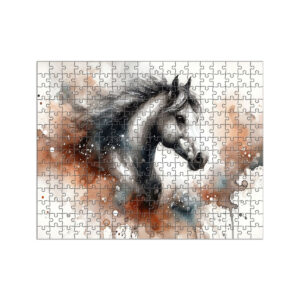
Explore & Play
Discover interesting topics and solve the accompanying crossword puzzle.
Direction Crossword | Essential Directional Terms and Concepts
Table of Contents
Welcome to our exploration of direction and movement! To enhance your understanding, we invite you to start with our Direction crossword. It’s a fun way to familiarize yourself with key terms and concepts. If you’re new to this topic, you might prefer to read the article first to build your knowledge, and then return to the crossword for a practical test of what you’ve learned. Enjoy the journey through direction and movement, whichever way you choose to start!
Direction Crossword
You can either fill in the crossword puzzle directly on this page or click the button in the bottom right corner to print it for free.

Navigating Life: Understanding the Key Terms and Concepts of Direction and Movement
In our everyday lives, direction and movement are fundamental concepts that shape how we navigate and understand the world around us. This article explores essential terms and concepts related to direction and movement, providing a comprehensive guide to their applications and significance.
1. The Basics of Direction
1.1. Cardinal Directions
The cardinal directions—North, South, East, and West—form the foundation of navigation and orientation. These basic directions help us situate ourselves in relation to our surroundings, whether we’re using a map, a compass, or simply describing where something is located. North typically points towards the top of most maps, while South is the opposite. East is where the sun rises, and West is where it sets. Understanding these directions is crucial for finding our way and communicating location effectively.
1.2. Intermediate Directions
Beyond the primary cardinal directions, intermediate directions such as Northeast, Southeast, Northwest, and Southwest offer a more precise way to describe locations and movements. By combining two cardinal directions, these terms help provide more detailed guidance. For instance, if you’re instructed to head Northeast, you’re moving diagonally between North and East, which can be more useful in navigating complex routes.
2. The Concept of Movement
2.1. Up and Down
Movement along the vertical axis, including directions such as Up and Down, plays a crucial role in navigating physical spaces and understanding elevation. Whether you’re climbing a hill or descending into a valley, these terms describe changes in height and position relative to the ground. Understanding these movements is essential for activities ranging from construction to hiking.
2.2. Forward and Backward
Moving Forward and Backward are fundamental directional terms that describe movement along a horizontal path. These terms are commonly used in everyday navigation, such as walking towards a destination or reversing a vehicle. Forward indicates progress in the direction you’re facing, while Backward refers to movement in the opposite direction.
3. Navigational Tools and Techniques
3.1. Using a Compass
A compass is an essential tool for determining direction, using magnetic fields to provide accurate bearings and guide travelers. By pointing the compass needle towards magnetic North, users can orient themselves and navigate with greater precision. This tool is invaluable for outdoor activities like hiking or sailing, where accurate direction is crucial.
3.2. The Role of Maps
Maps are critical for visualizing geographic locations and understanding spatial relationships. They integrate concepts like Latitude and Longitude to provide a comprehensive view of the world. Latitude lines run parallel to the Equator, while Longitude lines run from the North to South Poles. Together, they help pinpoint exact locations and facilitate accurate navigation.
4. Spatial Orientation and Positioning
4.1. The Importance of Bearings and Heading
Bearings and Heading provide detailed information about direction and movement, allowing for accurate navigation and orientation in various contexts. Bearings are measurements of direction relative to North, while Heading indicates the direction in which an object or person is currently moving. These terms are essential in aviation, maritime navigation, and land surveying.
4.2. Understanding Latitude and Longitude
Latitude and Longitude are vital for pinpointing exact locations on Earth, offering a global framework for navigation and spatial analysis. Latitude measures how far north or south a point is from the Equator, while Longitude measures how far east or west it is from the Prime Meridian. Together, they create a grid system that helps in mapping and navigation.
5. Pathways and Routes
5.1. Following a Path and Trail
Paths and Trails represent routes taken through various terrains, crucial for both pedestrian navigation and recreational activities. A Path might be a simple walkway through a park, while a Trail could be a marked route through a forest. Both serve as guides for travelers, helping them navigate their journey efficiently.
5.2. Defining a Route
A well-defined Route ensures a clear path from one location to another. Routes are planned paths that guide travelers from their starting point to their destination, whether it’s for a road trip, a public transit route, or a hiking trail. Defining a route involves considering factors like distance, terrain, and landmarks to create an effective travel plan.
6. Concepts of Slope and Elevation
6.1. Gradient and Incline
The Gradient and Incline of a surface affect movement and travel, influencing everything from hiking trails to road construction. The Gradient refers to the degree of slope or steepness, while Incline describes the upward or downward angle of a surface. Understanding these concepts is important for designing safe and functional pathways and roads.
6.2. Measuring Elevation
Elevation refers to the height of a location above sea level. It impacts everything from weather conditions to building design. Higher elevations can result in cooler temperatures and less oxygen, which can affect physical performance and construction requirements.
7. Advanced Directional Concepts
7.1. Parallel and Perpendicular Lines
Understanding Parallel and Perpendicular lines is essential for various applications, from architectural design to mathematical analysis. Parallel lines run in the same direction and never meet, while Perpendicular lines intersect at a right angle. These concepts are fundamental in geometry and engineering.
7.2. The Trajectory of Movement
Trajectory describes the path followed by an object in motion, crucial for fields like physics and engineering. Understanding an object’s trajectory helps predict its future position and is essential for planning everything from sports strategies to space missions.
8. Distance and Proximity
8.1. Measuring Distance
Distance is a fundamental measure of space between two points. It influences navigation, travel, and spatial planning. Accurate measurement of distance is crucial for creating maps, planning routes, and estimating travel times.
8.2. Understanding Proximity and Range
Proximity and Range provide insights into how close or far objects are from each other. Proximity refers to nearness, while Range describes the extent over which something can be effective or visible. These concepts are important in various contexts, including technology, geography, and urban planning.
9. Applying Directional Terms in Real Life
9.1. Everyday Navigation
Incorporating directional terms into daily navigation enhances our ability to understand and manage our movements through various environments. Whether you’re using a GPS, following directions, or simply describing a location, these terms help you navigate with ease.
9.2. Planning and Design
Directional concepts are integral to planning and design, influencing everything from urban layouts to personal travel itineraries. Understanding these terms helps in creating effective plans and designs that meet specific needs and goals.
Navigating Your World with Confidence
Direction and movement are integral aspects of our lives, from simple navigation to complex spatial planning. By understanding and applying these key terms, we gain a deeper appreciation of how we interact with the world. Ready to put your knowledge to the test? Play our crossword puzzle to see how well you grasp these directional concepts!
Share to...
I hope you enjoy the content.
Want to receive our daily crossword puzzle or article? Subscribe!
You may also be interested in
Share to…
Want to receive our daily crossword puzzle?
-
Jigsaw Puzzles
Zodiac Series Tiger Ink Puzzle – Black and White Art 250 | 300 | 500 Pieces
kr 348,00 – kr 439,00Price range: kr 348,00 through kr 439,00 Select options This product has multiple variants. The options may be chosen on the product page -
Jigsaw Puzzles
Majestic Horse Watercolor Jigsaw Puzzle 250 | 300 | 500 Pieces
kr 348,00 – kr 439,00Price range: kr 348,00 through kr 439,00 Select options This product has multiple variants. The options may be chosen on the product page -
Jigsaw Puzzles
Fish Market in Norway Jigsaw Puzzle 250 | 300 | 500 Pieces
kr 348,00 – kr 439,00Price range: kr 348,00 through kr 439,00 Select options This product has multiple variants. The options may be chosen on the product page

















